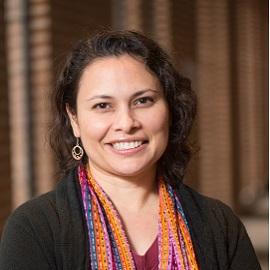Photo: Shutterstock.com
The Houston Education Research Consortium (HERC) is a program of the Kinder Institute for Urban Research under the direction of Ruth López Turley, PhD. HERC conducts work centered on improving outcomes and providing equitable educational opportunities for students in the Houston area and beyond.
HERC aims to improve the connection between education research and decision-making for the purpose of equalizing outcomes by race, ethnicity, economic status, and other factors associated with inequitable educational opportunities. HERC uses a partnership research model - a jointly developed research agenda that involves both researchers and school district leaders working together on critical issues to improve educational equity.
In which areas has the partnership research model been most successful?
While HERC has been around for ten years, it is only in the past three years that we extended beyond the original partnership with the Houston Independent School District (HISD). Expanding to include 11 public school districts in the Houston area has created a unique space where multiple districts can come together and develop a shared understanding around some of the perennial challenges faced by schools, as well as an opportunity to work together to address them. This regional approach moves us closer toward bringing about the systemic, widespread changes needed for addressing inequities and closing gaps.
HERC collaborated with Connective (formerly Harvey Home Connect) to launch the Gulf Coast Coronavirus (COVID-19) Community Impact Survey to understand the impact of COVID-19 on Houston area families during the first six months of the pandemic. What were key findings?
The Gulf Coast Coronavirus (COVID-19) Community Impact Survey made clear that the pandemic has impacted everyone, but impact has been very unequal in many predictable ways. Families who have historically occupied disadvantaged positions in society have borne the biggest brunt of the pandemic. Families in poverty, Black families, families whose primary language is something other than English -- these are the households who were more likely to have their children left behind when schools needed to shift to 100% online instruction because they did not have the necessary technological resources at home to stay involved. These were also the families most likely to report feeling hopeless during the early months of the pandemic. Workers from these families were also most likely to lose their jobs or have their hours significantly reduced. In these ways and more, the COVID-19 pandemic highlighted and accentuated existing inequalities, further exacerbating disparities and creating a more significant divide between the haves and have nots.
HERC is currently partnering with HISD for the Equity Project to better understand what access to resources, supports, and opportunities looks like for all HISD students. Could you tell us more about the aims of the Equity Project?
The aims of the Equity Project fall into two areas. First, we need to help HISD understand where inequities exist. But we do that with the second aim in mind: helping the district use this information to make decisions on how and where to improve resources available to the students who need them.
HERC partnered with the Organization for Economic Cooperation and Development (OECD) for an international survey studying the social and emotional skills of 10- and 15-year old students in HISD. What were the findings of the study? Houston was the only US site participating in the survey. How are factors influencing local students’ social and emotional skills similar or different than students in other cultures or educational systems?
In many ways, the things we have learned about the social and emotional skills of 10- and 15- year-old students in HISD are not surprising. We see some similarities between age groups, such as challenges in dealing with stress. Still, in several other areas, we see more variation across age and demographic characteristics. When thinking about how students in HISD compare to students around the world, it's probably no surprise that in a lot of ways, kids are kids. Despite different cultural contexts, their concerns and dreams share a lot of overlap. For many students worldwide, areas like curiosity and tolerance are associated with aspirations for postsecondary education. Similarly, around the world, students who report struggling with bullying also seem to report lower levels of other social skills. These experiences aren't unique to Houston students.
We look forward to sharing more detailed findings from these studies in the next few weeks.
One other note to keep in mind is that students were surveyed in the Fall of 2019, prior to the pandemic. It will be an important area for schools worldwide to monitor socio-emotional needs and provide support to students in the coming years.
Founded in 2011, HERC began as a partnership between Rice and HISD made possible through initial funding from the Laura and John Arnold Foundation and subsequent funding from Houston Endowment, Inc. In 2017, with funding from the Kinder Foundation, HERC expanded to other Houston-area school districts across the region, for a total of 11 district partners - representing more than 714,000 students. What is the vision of HERC for the next three years?
Over the next several years, we aim to collaborate with others to better integrate education research with research in housing, transportation, and other relevant areas to significantly impact systemic change.
For more information on HERC research studies, visit the Houston Education Research Consortium website.
Learn more about the HERC Team here.


